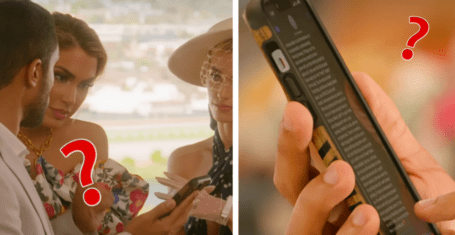
Die Fledermaus
CUOS serves Strauss better than Bollinger for RUTH MARINER
West Road Concert Hall, Thursday 23rd February – Saturday 25th February, £10/£16
[rating:4/5]
Last night the curtain opened to the operatic event of the year: Cambridge University Opera Society’s production of Die Fledermaus. Composed by Johann Strauss II in 1894, this light operetta takes its audience for a whirling waltz through Viennese aristocratic culture in a glitzy three-act tribute to the ballroom and its accompanying pleasures.
CUOS’s modern day equivalent was set in London, where the cast formed a Made in Chelsea-style network of wealthy twenty-somethings, ugg boots and all. The production used Alistair Beaton’s English translation, giving the audience a break from faffing with the libretto.
It was a five star performance from each member of the cast. Each actor made their character their own, and balanced slapstick humour and tomfoolery with a sense of earnestness and genuine appeal to human nature. Sam Oladeinde was an endearing and exuberant protagonist as Gabriel Von Eisenstein; Margaret Walker made a sultry yet steely Rosalinde – a part which is hard to give life to in the modern interpretation. Grace Durham’s trouser role, the Russian host Prince Orlovsky, was vivacious and accurate down to the last mannerism. Falke (Nick Mogg), Chief Inspector Frank (Iwan Davies), and Dr Blind (Henry Neill) were strong in their supporting roles. James Swanton took the caricature to new heights in his speaking part as the old jailer Frosch, and Peter Aisher played the thoroughbred Italian lover Alfredo with a perfect accent and bodily gestures.
Certain cast members stood out for their superb technical ability and musicality; Margaret Walker exhibited outstanding stamina and control, and Aisher’s tenor voice was outstandingly rich and resonant for someone of his age. The star of the show, however, had to be Kristi Bryson for her portrayal of the maid Adele. Byrson showed an outstanding level of vocal agility, and oozed an effortless yet vibrant theatricality in her role’s transformation from cockney sweetheart – “Buskers! Oi, you, bugger off and find a job!” – to an elegant charlatan actress.
The orchestra started off rather sluggish during the overture, but warmed up through the performance to deliver the crisp light steps and the lilting melody lines of the Waltz as we love and know them. The choreographed parts worked well, making a nice visual interlude and giving the chorus a chance to be more animated rather than static in the background. Musical director Alex Beetschen’s conducting was articulate and buoyant throughout the performance, although it was a little bit too school boy-clean. A deeper rendition would have loosened the reigns on the tempi and dynamic a little to air the darker, sharper crags that lay under the thin veneer of the Vienese high-life.
The disappointing element was definitely the set. The bridal staircase in the second act was unimaginative but at least pleasing to the eye; the final act attempted to be morbid but was uninspiring. The boudoir set of the first act, however, looked completely and utterly amateur: like a spare room decked out with Next items, circa 2003. There was no visual cohesion between any of the scenes, and the costumes were none too impressive. It seemed a bit of a let down considering other elements of the production, including the posters and programme notes had been so professional.
All in all, though, the audience loved it. And why shouldn’t they? This was Johann Strauss II exactly as he should be: dry, light, fine and sparkling. I’ll drink to that.









































